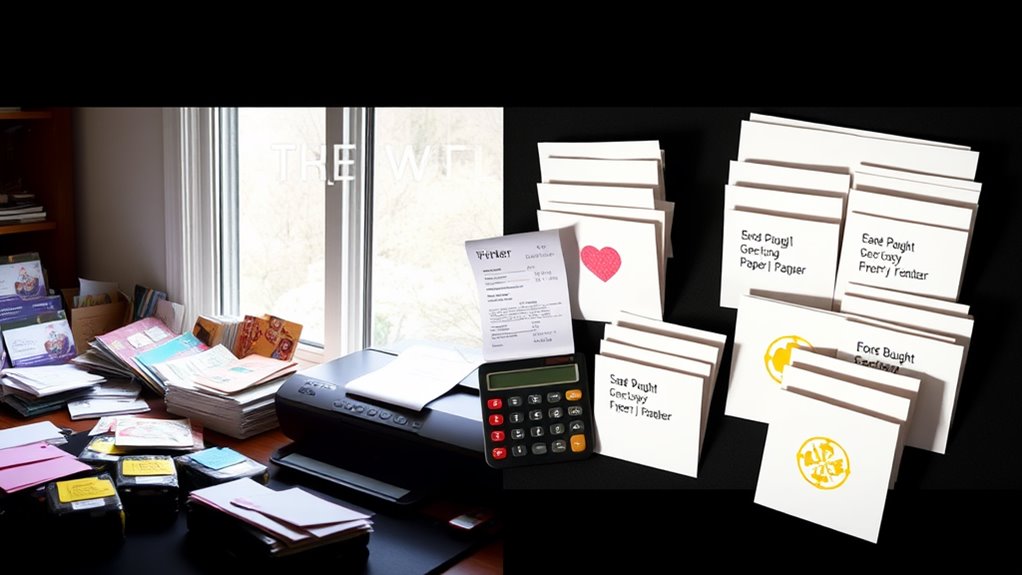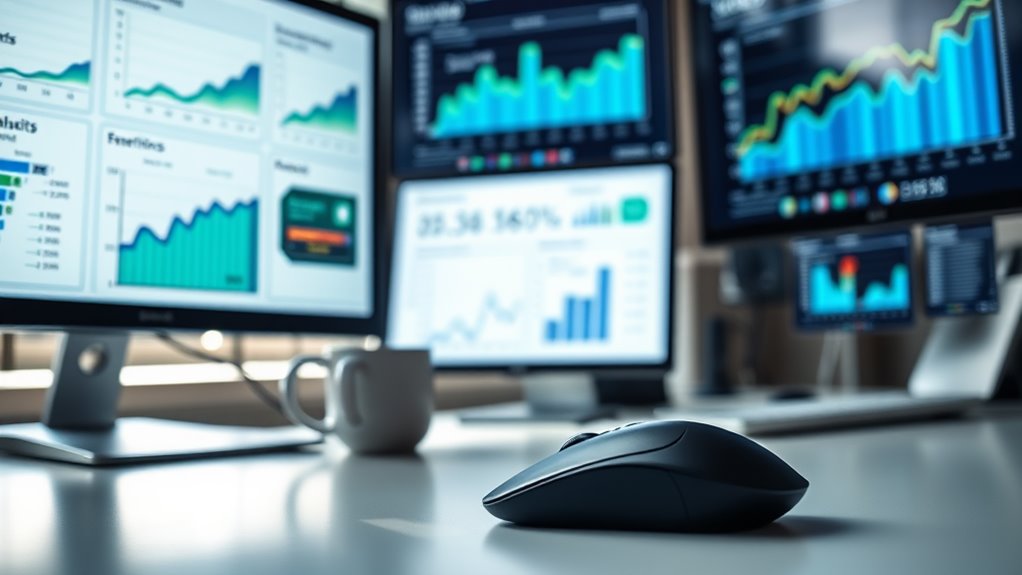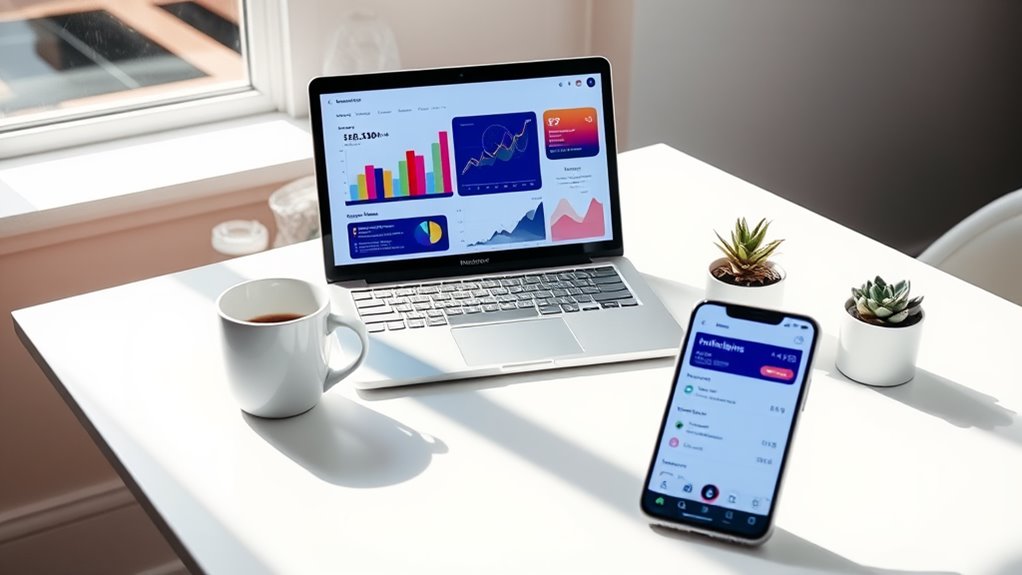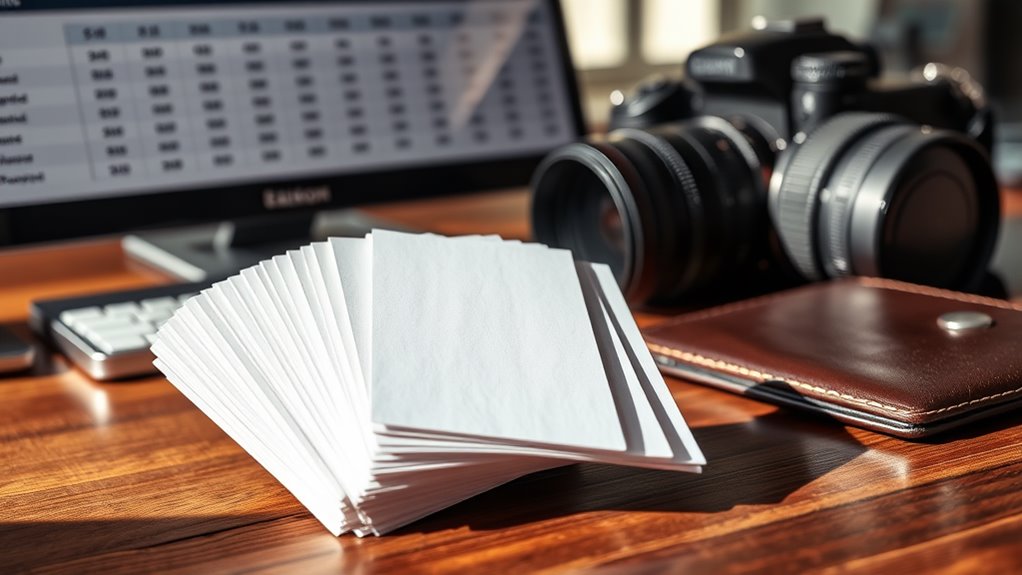Printing cards at home can be cheaper in the long run, but you'll need to evaluate the upfront investment of $400-$1,200 for quality equipment and supplies. While store-bought cards typically cost $2-8 each, home-printed cards average $0.75-1.50 per card once you're set up. You'll need a good photo printer ($200-600), cardstock ($20-40 per 100 sheets), and ink cartridges ($50-100 per set). The break-even point usually occurs after producing about 300 cards annually. However, you'll also invest time in design, setup, and production. The complete cost-benefit analysis reveals several important factors worth exploring.
Key Takeaway
- Home printing becomes cost-effective when producing over 300 cards annually, with per-card costs averaging $0.75-1.50 versus $2-8 for store-bought cards.
- Initial investment ranges from $400-1,200 for complete setup, including printer, software, and supplies, requiring significant upfront costs.
- Each home-printed card costs $0.65-1.20 in materials alone, including cardstock ($0.20-0.30), color ink ($0.35-0.75), and black ink ($0.10-0.15).
- Time investment is substantial, with 2-3 hours needed to produce 20 custom cards, affecting the true cost-effectiveness.
- Store-bought cards offer consistent quality without equipment maintenance, while home printing requires ongoing supply purchases and printer upkeep.
Startup Costs for Home Printing
Getting started with home card printing requires a significant upfront investment. You'll need to purchase essential equipment and supplies before you can begin creating your own cards at home.
Primary Equipment Needed:
- Quality photo printer ($200-600)
- Card design software ($0-300)
- Color calibration tools ($50-150)
Essential Supplies:
- Premium cardstock ($20-40 per 100 sheets)
- Ink cartridges ($50-100 per set)
- Cutting tools and rulers ($30-50)
- Storage solutions ($20-40)
When you're calculating your initial investment, expect to spend between $400-1,200 for a complete setup. The printer will be your most significant expense, and you'll want to choose one that specifically handles cardstock well. Many craft enthusiasts opt for printers like the Canon PIXMA series or Epson Expression photo printers.
Additional Considerations:
- Workspace setup and organization
- Backup supplies storage
- Regular maintenance costs
- Software updates and upgrades
You'll need to factor in these startup costs against your projected card-making volume to determine if home printing makes financial sense for your situation. Remember, quality equipment typically leads to better results and fewer costly mistakes.
Store-Bought Card Price Analysis
Today's retail greeting cards come with a wide range of price points, typically ranging from $2 to $8 for standard cards and $8 to $15 for premium options. When you're analyzing store-bought card costs, you'll need to reflect on several pricing factors:
Standard Card Pricing:
- Basic birthday cards: $2-4
- Holiday cards: $3-6
- Thank you notes: $2-5
- Blank cards: $1.50-3
Premium Card Features and Costs:
- Musical elements: +$3-5
- Elaborate designs: +$2-4
- Special materials (glitter, fabric): +$2-3
- Pop-up mechanics: +$4-6
Bulk Purchase Considerations:
- Box sets average $0.50-1.50 per card
- Multipacks reduce per-unit cost by 30-40%
- Seasonal clearance can offer 50-75% savings
You'll find that store-bought cards often include hidden costs beyond the sticker price. When you factor in tax, travel expenses to the store, and the time spent selecting cards, your actual cost per card increases by approximately 15-20%. Major retailers typically maintain consistent pricing structures, though you might find slight variations between urban and rural locations.
Ink and Paper Expenses

When calculating the true cost of printing cards at home, ink and paper expenses form the foundation of your budget analysis. You'll need to take into account both initial investments and ongoing costs to determine if it's financially worthwhile.
Initial Supply Costs:
- Card stock paper: $10-15 per 50-sheet pack
- Printer ink cartridges: $25-45 per color cartridge
- Specialty papers (glossy/textured): $15-25 per pack
Per-Card Cost Breakdown:
- Standard card stock: $0.20-0.30 per sheet
- Color ink usage: $0.35-0.75 per card
- Black ink usage: $0.10-0.15 per card
You'll want to factor in that high-quality photo cards consume more ink than simple designs, potentially doubling your per-card costs. Premium papers can increase your expenses by 30-50%, though they'll deliver better results. Most home printers yield approximately 250-300 color cards per ink cartridge set, depending on coverage and quality settings.
Cost-Saving Strategies:
- Purchase ink in multi-packs (15-20% savings)
- Use draft mode for test prints
- Buy paper in bulk during sales
- Optimize designs for minimal ink coverage
Time and Effort Considerations
Design and Setup
- Creating or selecting appropriate card designs (30-45 minutes per design)
- Configuring printer settings for ideal quality (10-15 minutes)
- Testing paper alignment and color accuracy (15-20 minutes)
Production Process
- Loading specialty paper without jamming
- Monitoring print quality for each card
- Cutting and folding cards precisely
- Addressing envelopes if needed
Common Time-Consuming Challenges
- Troubleshooting printer issues
- Making design adjustments
- Cleaning print heads
- Handling paper jams
You'll typically spend 2-3 hours producing a batch of 20 custom cards, including setup and finishing time. This doesn't account for potential reprints due to errors or quality issues. If you're planning to create cards regularly, you'll want to develop an efficient workflow and maintain organized supplies to reduce your time investment. Consider whether your schedule allows for these tasks, especially during busy seasons when card-giving is most common.
Print Quality Comparisons

The print quality between home-produced cards and professional prints varies greatly depending on your equipment and materials. When you're comparing output quality, you'll need to evaluate several key factors:
Professional Print Quality:
- 300-600 DPI commercial printing resolution
- Color-calibrated equipment for consistent results
- Professional-grade paper stocks and finishes
- UV coating options for protection
- Precise color matching systems
Home Printing Capabilities:
- Consumer printer resolution (typically 4800 x 1200 DPI)
- Limited paper handling capabilities
- Variable ink saturation levels
- Potential for banding or streaking
- Less consistent color reproduction
You'll find that professional printers often deliver superior results in these areas:
- Color vibrancy and accuracy
- Paper texture and weight options
- Special finishing effects (foil, embossing)
- Edge-to-edge printing capability
- Long-term fade resistance
However, modern home printers can achieve near-professional results if you're using:
- High-quality photo paper
- Premium ink cartridges
- Proper printer settings
- Regular printer maintenance
- Color calibration tools
The quality gap between professional and home printing has narrowed considerably with technological advances, but professional printing still maintains an edge in consistency and special effects.
Long-Term Cost Breakdown
Breaking down the long-term costs of card printing requires careful consideration of both initial investments and ongoing expenses. When you're calculating your total expenditure, you'll need to factor in your printer purchase, ink cartridges, and specialty paper costs over time.
To understand your true printing costs, consider these essential components:
- Initial Equipment: You'll spend $100-300 for a quality photo printer, plus $30-50 for paper trimming tools and basic supplies
- Consumables: Premium cardstock typically costs $15-20 per 50 sheets, while ink cartridge sets range from $30-60 and can print 100-150 cards
- Maintenance: Factor in $20-30 annually for printer cleaning supplies and potential parts replacement
Over a three-year period, you'll find that home printing becomes cost-effective if you're producing more than 300 cards annually. Your per-card cost will average $0.75-1.50, compared to $3-5 for store-bought cards. However, you'll need to maintain consistent print volumes to offset your initial investment. If you're printing less frequently, you might face higher per-unit costs due to ink drying between uses and potential printer maintenance issues.
Conclusion
After weighing all factors, you'll find that home printing becomes cost-effective only if you're creating more than 150 cards annually. As it happens, you'll spend about $200 on initial supplies, which coincidentally matches the yearly cost of store-bought cards for most families. Your break-even point will typically occur within 8-12 months, but you'll need to reflect on whether the time investment and quality differences align with your needs.









